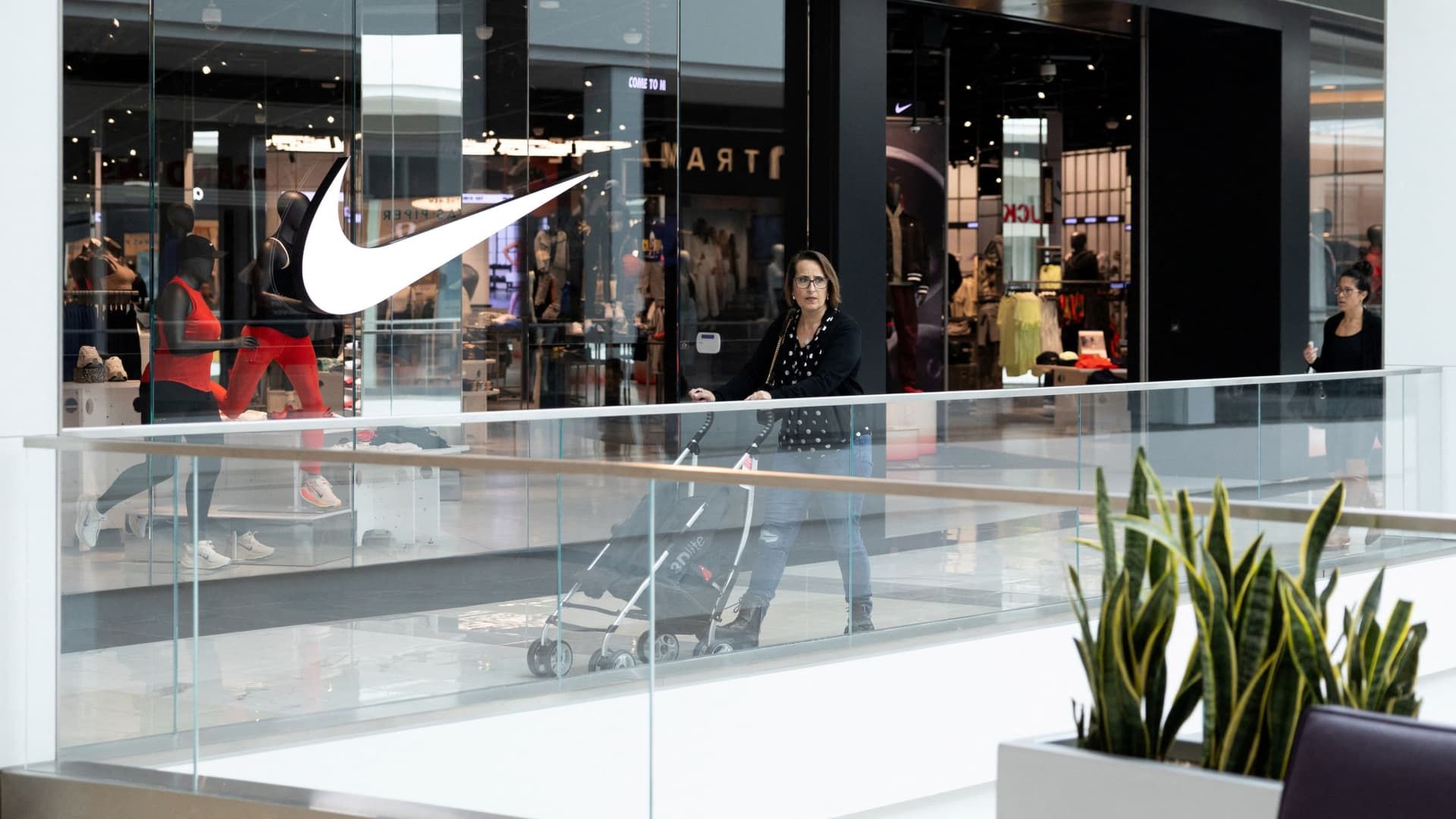Nike On Thursday, he said that sales and profits will decrease moderate before, after the giant of the shoes received their greatest financial success until his response plan during his fourth fiscal quarter.
While the worst could be behind the company, it has new challenges such as tariffs to face, which makes a difficult change much more difficult. In a call with analysts, Finance Chief Matt Friend described his duties a “new and significant” duties.
“With the new tariff rates today, we estimate a gross increase in incremental costs for Nike of approximately $ 1 billion” in its current fiscal year 2026, Friend said.
He added that the company intends to “completely mitigate” that cost over time as it modifies its supply chain, works with its factory and retail partners and implements price increases.
Currently, approximately 16% of its supply chain is in China and hopes to reduce that to the percentage range of a single digit at the end of its current fiscal year, which is expected to end next summer.
“Despite current high rates for Chinese products imported to the United States, manufacturing capacity and capacity in China remains important for our global origin,” Friend said.
Friend said the company will consider cost cuts, but its highest priority continues to stabilize its business, which requires investment.
Once these efforts are implemented, Friend said that the financial impact of the gross margin of fiscal year 2026 is expected to be 0.75 percentage points, with a greater expected impact on the first half.
While Wall Street's expectations were low to the report, Nike exceeded estimates in the upper and lower results.
This is how the company did during the three -month period that ended on May 31, compared to the estimates of the analysts surveyed by LSE:
- Profit per action: 14 cents per share compared to 13 estimated cents
- Revenue: $ 11.10 billion compared to $ 10.72 billion estimated
The company reported the company for the quarter was $ 211 million, or 14 cents per share, compared to $ 1.5 billion, or 99 cents per share, a year earlier.
Sales fell to $ 11.10 billion, approximately 12% of $ 12.61 billion the previous year.
The last quarter, Nike warned that his fourth fiscal quarter would be the low point of his change, but in later months, the conditions worsened, leaving investors wondering if more pain was yet to come.
In a press release, Friend confirmed that the fourth fiscal quarter will see the “greatest financial impact” of his change and the winds against moderate in the future are expected.
In a call with analysts, CEO Elliott Hill said it's time to “change the page.”
“The results that we report today in the fourth quarter and in fiscal year 2000 are not up to the Nike standard, but as we said 90 days ago, the work we are doing to reposition the business through our 'Win Now' actions is to have an impact,” said Hill. “From here, we hope that our commercial results will improve.”
For the current quarter, Nike expects sales to decrease by a means of average digits, in line with the expectations of 7%lower, according to LSEG. He hopes that his gross margin decreases between 3.5 and 4.25 percentage points, including 1 percentage point from rates rates currently in force today.
Nike's actions initially fell after his report was published, but moved approximately 10% more during the company's telephone conference.
During the quarter, Nike's profits fell into an amazing 86%, since it worked to clarify the Rancio inventory, bring the wholesale partners and restore their digital business. The greatest success for the margins came from the use of discounts and authorization channels by Nike to download the inventory, along with its change of return to the wholesaler, which is a less profitable channel than selling directly on its website and stores.
The company warned that the strategy would lead to shorter profits in the short term, but would leave the business in a healthier long -term position.
During the quarter, the direct income of Nike, which represents stores, wholesale and their website, fell 14%, led by a 26% drop in digital sales and a 9% decrease in wholesale.
Nike stores, however, were a brilliant point. During the quarter, sales in Nike stores increased by 2%.
Pedestrian traffic data in Nike stores have decreased since October, but these figures also indicate that the conditions could be improving, according to pleasure.
Monthly visits to Nike stores fell 10.2% in April compared to the previous year, but that decrease was reduced to 3.2% in May, according to plant.AI.
The income fell in all regions during the quarter, but they arrived a little better than expected in North America, the largest market in Nike. Sales fell 11% to $ 4.70 billion in North America, better than analysts of $ 4.42 billion expected, according to Streetacount.
Even so, China's revenues reached $ 1.48 billion, just below analysts of $ 1.50 billion waiting, according to Streetacount.
Since Nike for the last time in profits, tariffs on goods imported from China have increased to 30%. The company increased prices on its assortment to compensate for those costs, CNBC reported previously.
The first launch of the product since its long -awaited association with the intimidated line of Kim Kardashian was also supposed to also go live during the quarter, but now that has been delayed at the end of this year, CNBC previously reported.
When Nike organizes their telephone conference at 5 PM ET, investors will be more interested in Nike's guide. But Wall Street will also look for more details about the state of your response, the vision of the launch pipe of your product and if you can continue to reduce expenses.
The plans for the Nike Association with Skims will also be a key point of interest. Beyond cleaning the Rancio inventory and releasing more innovative styles, Nike is working to earn more buyers, which is estimated to represent approximately 40% of their business.
This gender gap is not ideal for discretionary retailers because women tend to spend more on clothes than men. Nike has lost market share to sportswear such as Lululemon and Al Yoga, who serve a similar client but are more oriented to women.
The shoes remain the most important part of the Nike business, but clothing is a growth area for the company, which represents approximately 28% of the Nike brand revenues in fiscal year 2024.









